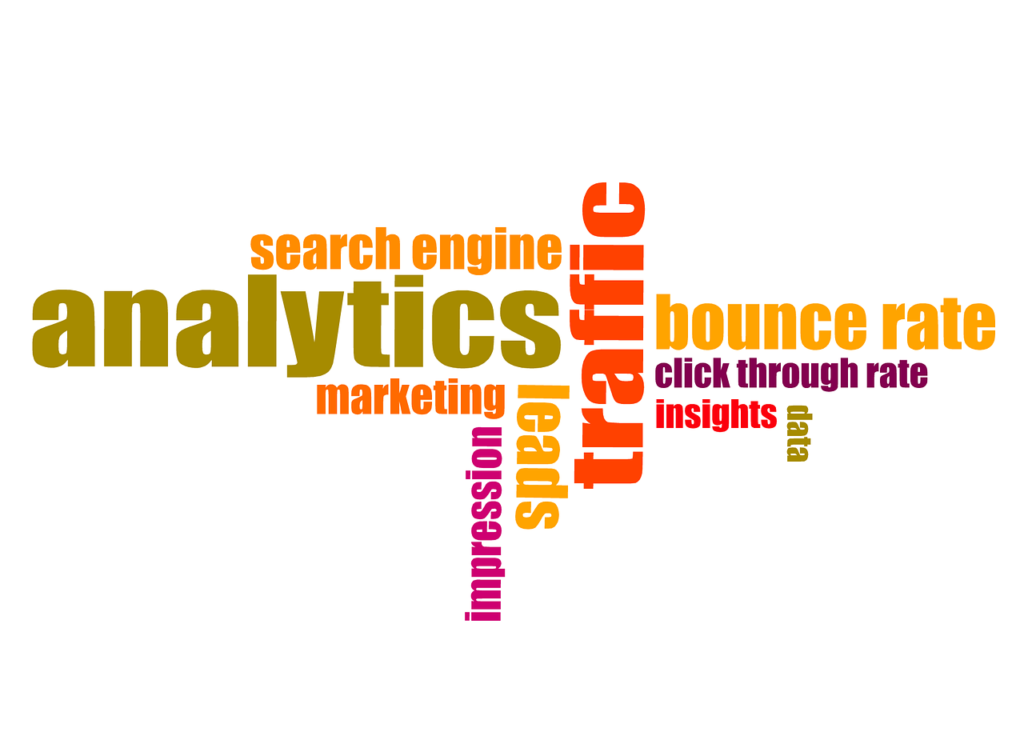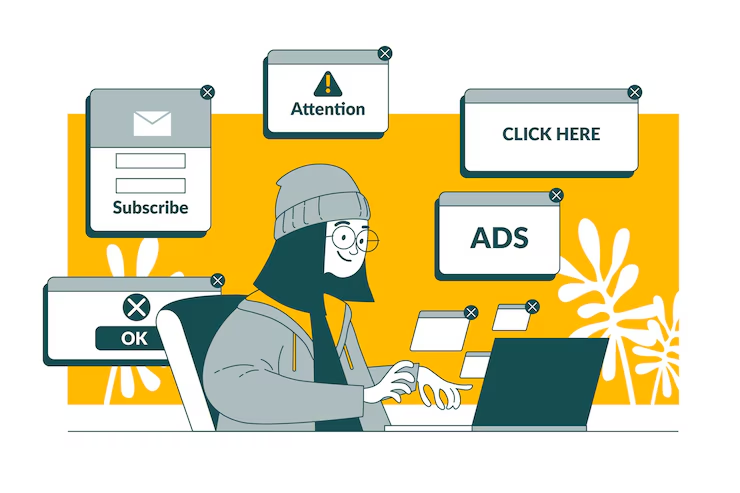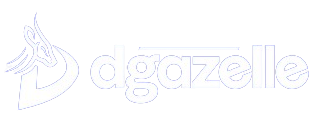The Best Marketing Tools Every Business Owner in 2025 Should Be Using to Grow Fast

You do not need to use every tool. The right approach is to look at your current stage and biggest bottleneck. If you lack leads, focus on CRM and ads. If you have traffic but no conversions, focus on email marketing and funnels. If you already have customers but low retention, focus on CRM and analytics. Choose tools based on your problem, not on hype.
Email Marketing Automation for Small Businesses: The Complete Guide to More Sales, Less Stress

According to Campaign Monitor, automated emails generate 320% more revenue than non-automated ones. In this guide, I’ll show you exactly how to use email marketing automation for your small business, the tools you need, and the proven strategies to skyrocket your ROI
Sunday Samuel Chubuikem: The Digital Growth Strategist Helping African Businesses Scale Online with Confidence

In a continent bursting with entrepreneurial energy yet struggling with visibility and systems, Sunday Samuel Chibuikem is bridging the gap. As a digital marketing strategist and founder of Dgazelle Digital, he’s not just helping businesses show up online; he’s helping them grow up. From tech startups and nonprofits to oil & gas corporations and international institutions, Sunday has become the go-to strategist for building digital systems that attract, convert, and retain customers, profitably and predictably. From a Local Learner to Global Strategist Sunday’s journey began with curiosity and a computer. His first professional training was in website design at SOUTECH, one of Nigeria’s leading IT institutions. But that was just the beginning. Over the years, he’s gone on to earn multiple certifications in digital marketing, strategy, Facebook, and Google ads mastery from notable global institutions, including DigitalMarketer (USA), Google, Facebook, and Udemy. Rather than just chasing trends, he immersed himself in learning systems that integrate content, email, advertising, automation, SEO, and conversion science, so clients don’t just “look good online,” but actually make money online. Driving Growth Across Industries and Borders Today, Sunday leads Dgazelle Digital, a growth-focused digital marketing and tech agency serving clients in Nigeria, Ghana, the U.K., the U.S., Canada, Australia, and Dubai. He has worked extensively across sectors, with tech and non-tech startups, NGOs, academic institutions, and corporate organizations, including those in the oil & gas industry. One of his most prominent engagements has been as the Digital Marketing and Brand Manager for London Academy Business School (LABS), an international academic institution with a presence in London, Lagos, and Dubai. There, Sunday led multi-channel campaigns that expanded LABS’ market presence, built brand authority, and increased student enrollment across markets. From building full-funnel systems for e-commerce brands, to executing public sector digital initiatives, Sunday’s approach is always the same: use strategy, not noise. His agency’s efforts earned them the MEA Markets International African Excellence Award (2023) as Emerging Digital Marketing Agency of the Year – Nigeria. Under Sunday’s leadership, Dgazelle has helped businesses scale from zero to $80,000+ in revenue within months, partnered with public institutions on digital bootcamps, and signed brand ambassadors like Nkem Offonabo and industry voices like Dr. Glory Edozien. Beyond Business: Youth Empowerment and Community Impact But Sunday’s influence is not limited to client work. A former President of Jamie Pajoel International (Bayelsa Chapter), he organized a State Youth Assembly that brought together over 200 emerging leaders in Bayelsa to learn business, leadership, and innovation. His passion for impact inspired the first-ever Digital Innovation Conference at his alma mater, Federal University Otuoke, a milestone event sparked by a private bootcamp he had hosted on campus earlier. Since then, he has been invited to speak and train at various platforms, impacting over 10,000 individuals online and offline through masterclasses, workshops, and digital campaigns. He also convened the 10X Business, Sales & Growth Conference, a high-impact event that has equipped 1,000+ entrepreneurs and professionals with the tools to grow and scale their ventures. “No dream is too big, and no dreamer is too small,” Sunday says, a quote that mirrors his approach to work, mentorship, and the future of Africa’s digital economy. Building Africa’s Next Generation of Digital Giants Sunday’s life mission is clear: help people and businesses win using digital systems. Whether it’s installing a growth marketing engine for a startup or equipping students with real-world skills, his focus is the same, drive meaningful, measurable growth. As Africa races toward a digital future, leaders like Sunday Samuel Chibuikem are ensuring the continent is not just connected, but strategically competitive
3 Reasons why Your Meta Ads Are Failing, And the Exact Fix You Need to Start Seeing Results

Meta Ads (Facebook & Instagram) used to be easy. In 2015, you could throw $5 at a boosted post and watch leads roll in.
But today’s ad environment is more competitive, more expensive, and more algorithm-driven than ever.
Here’s what many small business owners don’t realise:
> “Running ads isn’t the same as running profitable ads
Why Most Business Website Fail – and How to Fix Yours Without Starting Over

We have seen this happen over and over again: a beautiful business website that looks nice but does not actually help the business grow. It does not bring in leads, does not build trust, and does not convert visitors into customers. In 2025, having a business website is not enough. Almost every business, whether in food, fashion, coaching, real estate, or tech, has an online presence But why do so many of them still struggle to grow? The answer? Their website is not doing what it is supposed to do. At Dgazelle Digital Services, we help business owners like you build business websites that do more than just look good. We design sites that work. If you feel like your website is not pulling its weight, this post will show you why, and how to fix it. The Problem: A pretty business websites with no real purpose Let us be honest most people judge a business website by how it looks. And yes, design matters. But design without direction is like building a beautiful store with no entrance. If your homepage is filled with pretty colors but does not explain what you do, who it is for, or how it helps, people will leave confused. We see websites all the time with: These things might seem small, but they make a big difference. If people visit your business websites and do not know what to do next, they will just close the tab. A strong website needs to guide your visitor clearly from the moment they land to the moment they take action. Ready to transform your website into a tool that actually grows your business? Let’s build something strategic together, reach out to Dgazelle today. What It Is Really Costing You When your business website is not working, you are not just losing traffic, you are losing opportunities. You could be missing: No matter what kind of business you run, whether it is skincare, fashion, coaching, real estate, education, or anything else, your website should support your goals. If it is not doing that, it is costing you more than you think. The Fix: How to rescue your business websites The good news is, you do not need to start from scratch. Most times, it is just about making smart changes that bring clarity and direction to your site. Here is how we approach it at Dgazelle: 1. Focus on the problem your customer is facingPeople do not visit your website because they are curious about you. They visit because they have a need. Your site should speak to that need right away. Think about this: when someone lands on your homepage, can they clearly say, “Yes, this is for me”? 2. Make your offer simple and clearAvoid long or clever statements. Instead, use plain words to explain what you do, who it is for, and what they will gain. Example:“We help small business owners create websites that actually bring in sales and make running their business easier.” 3. Clean up your navigationYour menu should not feel like a maze. Keep it simple, with the most important pages easy to find. This makes your site feel welcoming and easy to explore. 4. Design with purposeEverything on your site should lead your visitor somewhere. Use buttons that stand out. Place your most important information near the top. Add testimonials, answers to common questions, or a trust badge, anything that builds confidence. 5. Make it mobile-friendlyMost people will visit your site on their phones. If it is hard to read, slow to load, or awkward to use, they will give up. Make sure your site works well on any device. 6. Be easy to find onlineYour website should show up when people search for what you offer. That means using the right keywords, writing helpful content, and making sure your site loads quickly and runs smoothly. This is what we call SEO, and we build it into every project we take on. Final Thoughts Your website is more than just an online presence, it is part of your team. When it works well, it saves you time, builds trust, and helps grow your business. But if it is not doing any of that, it might be time to make a change. This is what we do at Dgazelle Digital Services. We help business owners turn their websites into something that supports them, not something that drains their energy. If you are ready for a website that is clear, helpful, and built with growth in mind, we would love to help you get there. Let’s build a website that works as hard as you do. Ready to transform your website into a tool that actually grows your business? Let’s build something strategic together, reach out to Dgazelle today.
Optimizing Digital Impact: How Marketing to Target Audiences Generates High-Quality Leads.
Casting a wide net is no longer a successful technique in the congested digital economy of today. Companies that know exactly who they are talking to are the ones that succeed. The key to many successful digital initiatives is target audience marketing, which helps companies generate high-quality leads, boost conversions, and enhance return on investment. This post will discuss the importance of understanding your audience, how to identify and connect with them, and how it directly affects lead quality. Target Audience Marketing: What Is It? The strategic practice of identifying and concentrating your marketing efforts on a certain customer group that is most likely to buy your product or service is known as target audience marketing. Important traits that distinguish this audience include: Demographics: location, gender, and age Psychographics (lifestyle, values, and interests) Behavioral information (online activity, buying patterns) Needs and pain points You may cut down on wasted ad spend and create more effective and relevant messaging by focusing on the people who are most likely to interact. Why Targeted Marketing Drives Better Leads Marketing to your target demographic produces quality leads people who are actually interested in what you have to offer, rather than merely traffic. Here’s how: 1. Tailored Communications Potential clients are more receptive to content that is specifically tailored to them. Users are more inclined to trust and convert when they believe a business understands them. 2. Increased Rates of Conversion Your campaigns target people who have a genuine need or interest rather than trying to appeal to everyone. Higher engagement rates and more sales are frequently the results of this connection. 3. Effective Resource Utilization The dangers of “spray and pray” advertising are avoided with targeted marketing. You improve total marketing ROI by just allocating resources where there is quantifiable potential. How to Identify and Reach Your Target Audience 1. Develop Buyer Personas To develop comprehensive personas of your ideal clients, use analytics tools, market research, and customer surveys. 2. Examine Current Client Information You can learn a lot from your current clientele. Who are they? From where did they originate? What matters to them? 3. Make Use of Specific Platforms Select digital platforms such as Google, Facebook, LinkedIn, Instagram, and others based on where your target audience spends their time. 4. Make Use of Behavioral Targets Retarget customers according to their previous brand engagements. Delivering timely and pertinent communications is aided by behavioral data. Example from the Real World: B2B Tech Startup LinkedIn advertisements were utilized by a B2B SaaS firm that targets mid-size healthcare providers to reach decision-makers, such as IT heads and hospital managers. They experienced a 300% increase in qualified leads in just three months by coordinating messaging with particular concerns (such as compliance and patient data protection). Without precise audience targeting, none of this would have been feasible. Conclusion In the age of hyper-personalized marketing, understanding your audience is no longer optional, it’s essential. Target audience marketing not only improves the relevance of your campaigns but also ensures that your digital efforts lead to real business results. Whether you’re a startup or a growing enterprise, investing in understanding and marketing to the right audience will pay dividends in lead quality, customer loyalty, and long-term growth.
How to Cut Your Bounce Rate in Half with These 6 Simple Strategies

Cut your bounce rate in half with six simple strategies to boost engagement, improve page speed, enhance UX, and increase conversions. Learn how to reduce bounce rate and keep visitors on your site longer with proven, actionable tips.
How to Repurpose Your Content With AI
Content creation is one of the most time-consuming tasks in digital marketing. You spend hours writing a blog, filming a video, or recording a podcast—but often, it’s published once and left to collect digital dust. What if you could turn one great piece of content into dozens of new ones without burning out your team?That’s where AI-powered content repurposing comes in. AI is changing how marketers approach content creation, especially when it comes to maximizing value from existing material. With the right tools and strategy, you can breathe new life into old content—saving time, increasing reach, and boosting ROI. Let’s break down how to do it efficiently and creatively. What Does It Mean to Repurpose Content? Repurposing content means taking one asset (a blog post, video, webinar, podcast, etc.) and adapting it into different formats or for different platforms. Instead of starting from scratch every time, you’re leveraging what you already have—and reaching your audience wherever they are. Think of it like cooking a large batch of stew: you can serve it today, freeze it for later, or transform it into something entirely new like a pie filling or pasta sauce. Smart, right? How AI Makes Content Repurposing Easier (and Smarter) AI tools can analyze, summarize, rewrite, and reformat your content in seconds. What once took hours now takes minutes—without sacrificing creativity or consistency. Here’s how AI can help you repurpose content: Summarize long-form content: Turn a blog post into social media captions or a YouTube description. Create visual content: Use AI to turn articles into infographics, slideshows, or carousels. Generate email copy: Pull highlights from webinars or blogs to create newsletters or drip campaigns. Adapt tone and style: Want the same article in a more casual or more formal tone? AI can help rewrite it for different audiences. Transcribe and repurpose audio/video: AI can convert video or podcast transcripts into articles, quotes, or social content. Realistic Examples of Repurposing With AI Let’s say you recorded a 20-minute video on “How to Build a Sales Funnel.” Using AI, you can quickly: That’s 6+ content pieces from a single video—and all in less than half the time it would take to do manually. Tools You Can Use Here are a few powerful AI tools you can use to repurpose content: Why It’s a Game-Changer for Marketers Repurposing with AI isn’t just about saving time—it’s about doing more with less. Whether you’re a solo content creator or a marketing team juggling multiple channels, AI helps you: In a world where content is king, repurposing is the queen that multiplies your reach—and AI is the strategist that brings it all together. Final Thoughts: Work Smarter, Not Harder You don’t need to constantly chase the next piece of viral content. You already have valuable material—you just need to learn how to stretch it further. With the help of AI, you can transform a single blog into a month’s worth of content that’s polished, platform-ready, and personalized.
What is Ad Personalization and How to Use?

Ad personalization is the key to delivering useful, timely ads that connects with your audience. But then what exactly is it, and how can you use it effectively?
What If Everything You Know About Selling Digital Products Is Wrong?
If you’re a digital product seller — someone who offers ebooks, mini courses, templates or coaching — and you’re still trying to sell only through posts, DMs, and prayer, let’s fix that.You don’t need a bigger audience.You need a better system.And that system is called a sales funnel. What is a Funnel and Why Should Digital Product Sellers Care. A funnel is a step-by-step system that turns strangers into paying customers — on autopilot.It’s not a trend. It’s not just for 6-figure coaches.It’s the smartest way to scale your digital product sales, even if you’re just starting out. A typical beginner sales funnel looks like this:Free lead magnet (guide, checklist, free class)→ Email sequence that builds trust→ Offer page that sells your product You set it up once. It runs 24/7.No extra effort. No overwhelm. Why Digital Product Sellers Think Funnels Aren’t for Them Let’s call out the three biggest lies: How to Set Up a Simple Funnel That Actually Converts. Free checklist Mini guide Email mini course Quick-win template 📌 Pro tip: Your lead magnet should connect directly to the product you sell. Don’t just drop the freebie and vanish. Use email to: This is where relationships meet results. Skip the fluff. Use a conversion-optimized page that: You don’t need a fancy website — just a page that sells. Why This Funnel Can 2X Your Income — Even With a Small List Instead of shouting louder online, you guide people through a system built to convert. Even if your audience is just 300 people. Even if your product is ₦5,000. Even if you’re just starting. Funnels = Leverage. Let’s Build Yours at Dgazelle Digital We’ve helped digital product sellers like you: Funnels aren’t a “someday” thing —They’re your next move if you want to grow without burning out. Message us now to build your funnel from scratch

